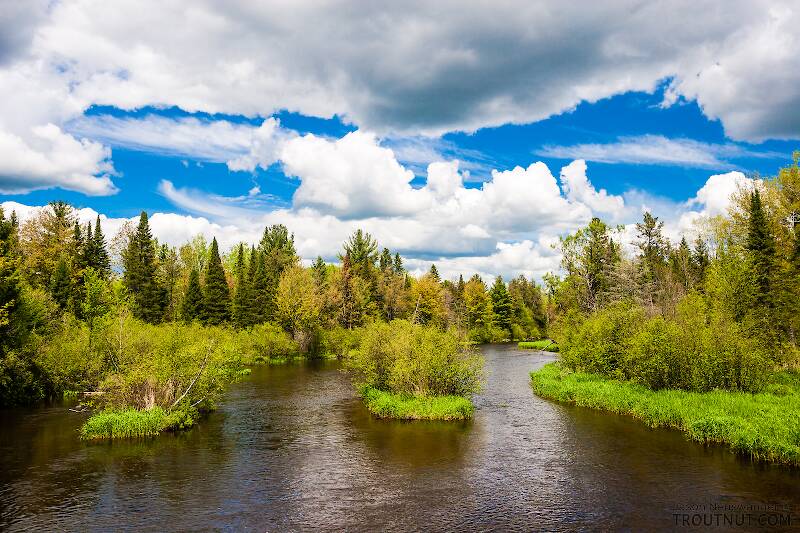
Hex Mayflies
Hexagenia limbata
The famous nocturnal Hex hatch of the Midwest (and a few other lucky locations) stirs to the surface mythically large brown trout that only touch streamers for the rest of the year.


Stonefly Species Sweltsa occidens (Sallflies)
Species Range
Physical description
Most physical descriptions on Troutnut are direct or slightly edited quotes from the original scientific sources describing or updating the species, although there may be errors in copying them to this website. Such descriptions aren't always definitive, because species often turn out to be more variable than the original describers observed. In some cases, only a single specimen was described! However, they are useful starting points.
Description from GBIFthe Global Biodiversity Information Facility
Source: A Contribution To The Knowledge Of Sweltsa Exquisita (Frison) And Sweltsa Occidens (Frison) And Description Of A New Species Of Sweltsa From The Northern Rocky Mountains, U. Sweltsa A. (Plecoptera: Chloroperlidae)
Male. General color yellow in life, head with dark ocellar rings, pronotum yellow, but with dark lateral margins, black stripe running down terga 1 - 8, terminal mark on tergum 8 longer than wide and never divided. Tergum 9 lacking bare elevated process (Fig. 10). Epiproct erectile, elongate, in dorsal view, tapered to apex (Fig. 10); extreme apex bare, (Figs. 10 - 13), in lateral aspect, apex expanded ventrally, but generally flattened laterally (Figs. 12 & 13); dorsal and lateral surface of epiproct covered with dense pile of long appressed setae, extending to the epiproct base (Figs. 10 - 13), laterally, base bare (Fig. 12). Aedeagus tubular, constricted near upper 1/3, with two bulbous lobes, bearing two smaller apical projections (Figs. 14 & 15), more expanded apex with broad lobes and dorsal finger-like projection medially (Fig. 16), surface with comb-like setae arranged in interrupted rows, with patch of stronger setae located at base of constricted area (Figs. 16 & 17).
Female. Color and markings similar to male. Subgenital plate subtriangular and not covering all of sternum 9, apex more narrowly rounded, often exhibiting a shallow emarginate area at the tip, but the posterior margin is usually entire (Fig. 27) for Sweltsa durfeei.
Start a Discussion of Sweltsa occidens
Stonefly Species Sweltsa occidens (Sallflies)
Species Range
Common Names
Resources
- NatureServe
- Integrated Taxonomic Information System
- Global Biodiversity Information Facility
- Described by Frison, T.H. (1937) II. Descriptions of Plecoptera with special reference to the Illinois Species. Illinois Natural History Survey Bulletin 21, 78–99.

